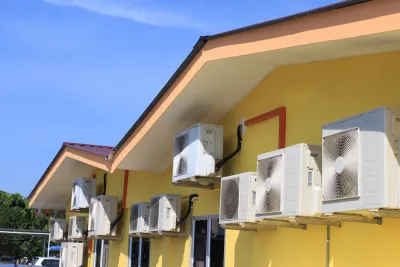An analysis of trends in energy-efficiency improvements reveals the success of policies enacted during the previous decades.

"Compared to 2009, single-family homes built before 1980 are now better insulated, have relatively newer heating equipment, and are more likely to have undergone an energy audit," according to an article by Elizabeth La Jeunesse.
"Homeowners' annual spending for related projects—including roofing, siding, windows/doors, insulation and HVAC—expanded from $50 billion to nearly $70 billion over 2009-2015," adds La Jeunesse.
La Jeunesse is sharing the results of Harvard Center for Joint Housing Studies analysis of the U.S. Energy Information Administration's Residential Energy Consumption Survey (RECS). The article credits the improvement of energy efficiency in the nation's older housing stock to incentives put in place when energy prices spike in the mid-2000s. At the federal level, La Jeunesse, credits the Obama Administration's American Recovery and Reinvestment Act of 2009, "which extended and strengthened tax credits for energy improvements to existing homes, including insulation, windows, roofs, water heaters, furnaces, boilers, heat pumps, and central air conditioners."
Energy prices have dropped enough since then, however, that the article includes a warning about a relative lack of incentives for energy-efficiency improvements.
FULL STORY: Significant Improvements in Energy Efficiency Characteristics of the US Housing Stock

National Parks Layoffs Will Cause Communities to Lose Billions
Thousands of essential park workers were laid off this week, just before the busy spring break season.

Retro-silient?: America’s First “Eco-burb,” The Woodlands Turns 50
A master-planned community north of Houston offers lessons on green infrastructure and resilient design, but falls short of its founder’s lofty affordability and walkability goals.

Delivering for America Plan Will Downgrade Mail Service in at Least 49.5 Percent of Zip Codes
Republican and Democrat lawmakers criticize the plan for its disproportionate negative impact on rural communities.

Test News Post 1
This is a summary

Test News Headline 46
Test for the image on the front page.

Balancing Bombs and Butterflies: How the National Guard Protects a Rare Species
The National Guard at Fort Indiantown Gap uses GIS technology and land management strategies to balance military training with conservation efforts, ensuring the survival of the rare eastern regal fritillary butterfly.
Urban Design for Planners 1: Software Tools
This six-course series explores essential urban design concepts using open source software and equips planners with the tools they need to participate fully in the urban design process.
Planning for Universal Design
Learn the tools for implementing Universal Design in planning regulations.
EMC Planning Group, Inc.
Planetizen
Planetizen
Mpact (formerly Rail~Volution)
Great Falls Development Authority, Inc.
HUDs Office of Policy Development and Research
NYU Wagner Graduate School of Public Service




























